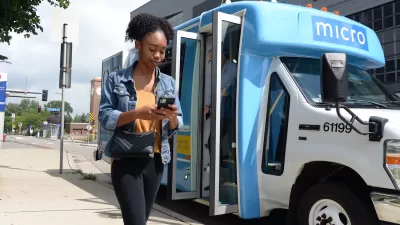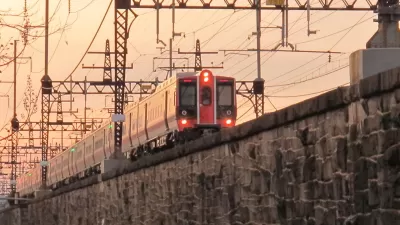Today, most transportation professionals are aware that the era of inexorable growth in vehicular travel has ended. Yet many state DOTs and local public works departments continue to assume that traffic will grow far into the future.
Next time you attend a public workshop on a proposed road or street project, ask the project engineer how the traffic forecasts were prepared. The answer will usually be that forecasts of local traffic growth (based on land use forecasts) were added to a “background” or “regional” traffic growth factor. Ask what that that background growth factor is and the answer most often will be 2 – 3% per year.
How reasonable is that? Let’s take a look.
While overall VMT nationwide has declined by 2% since 2006, the decline has not yet cancelled out the growth that occurred during the first six years. So the twelve-year trend was a net 8% – about 0.67% annually. At the state level in the Rocky Mountain West, states experienced growth in total VMT from 2000 to 2012, while Colorado and Wyoming saw declines during the last six years of that period. The decline nationally since 2006 has been widely reported by the media. However, highway advocates counter that this decline was due to temporary factors associated with the Great Recession coupled with rising fuel costs and should not be viewed as a long term trend.
But there is more to the story.
FULL STORY: Under Construction: Road upkeep in an era of diminishing vehicular travel

Alabama: Trump Terminates Settlements for Black Communities Harmed By Raw Sewage
Trump deemed the landmark civil rights agreement “illegal DEI and environmental justice policy.”

Planetizen Federal Action Tracker
A weekly monitor of how Trump’s orders and actions are impacting planners and planning in America.

The 120 Year Old Tiny Home Villages That Sheltered San Francisco’s Earthquake Refugees
More than a century ago, San Francisco mobilized to house thousands of residents displaced by the 1906 earthquake. Could their strategy offer a model for the present?

Opinion: California’s SB 79 Would Improve Housing Affordability and Transit Access
A proposed bill would legalize transit-oriented development statewide.

Record Temperatures Prompt Push for Environmental Justice Bills
Nevada legislators are proposing laws that would mandate heat mitigation measures to protect residents from the impacts of extreme heat.

Downtown Pittsburgh Set to Gain 1,300 New Housing Units
Pittsburgh’s office buildings, many of which date back to the early 20th century, are prime candidates for conversion to housing.
Urban Design for Planners 1: Software Tools
This six-course series explores essential urban design concepts using open source software and equips planners with the tools they need to participate fully in the urban design process.
Planning for Universal Design
Learn the tools for implementing Universal Design in planning regulations.
Clanton & Associates, Inc.
Jessamine County Fiscal Court
Institute for Housing and Urban Development Studies (IHS)
City of Grandview
Harvard GSD Executive Education
Toledo-Lucas County Plan Commissions
Salt Lake City
NYU Wagner Graduate School of Public Service





























